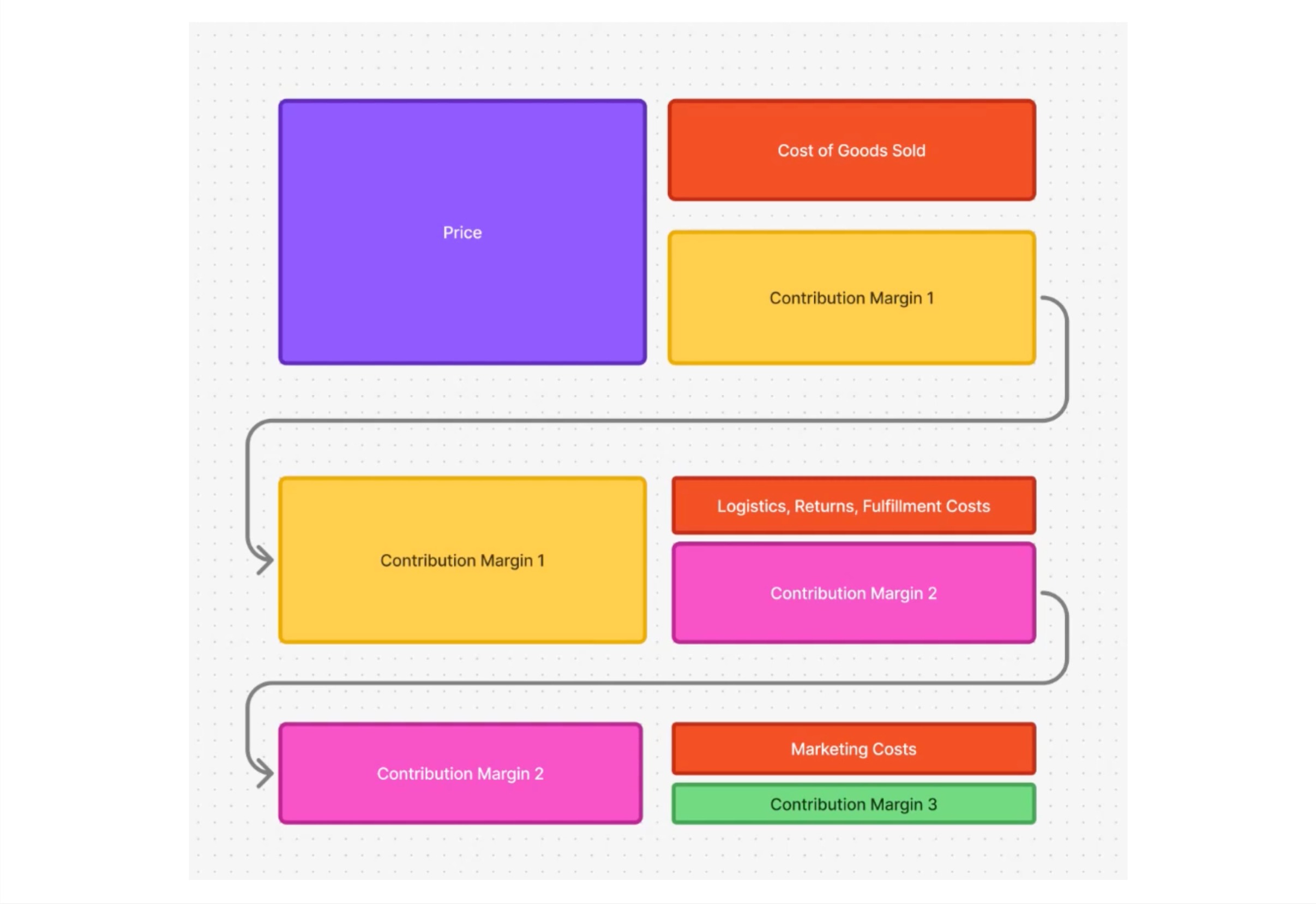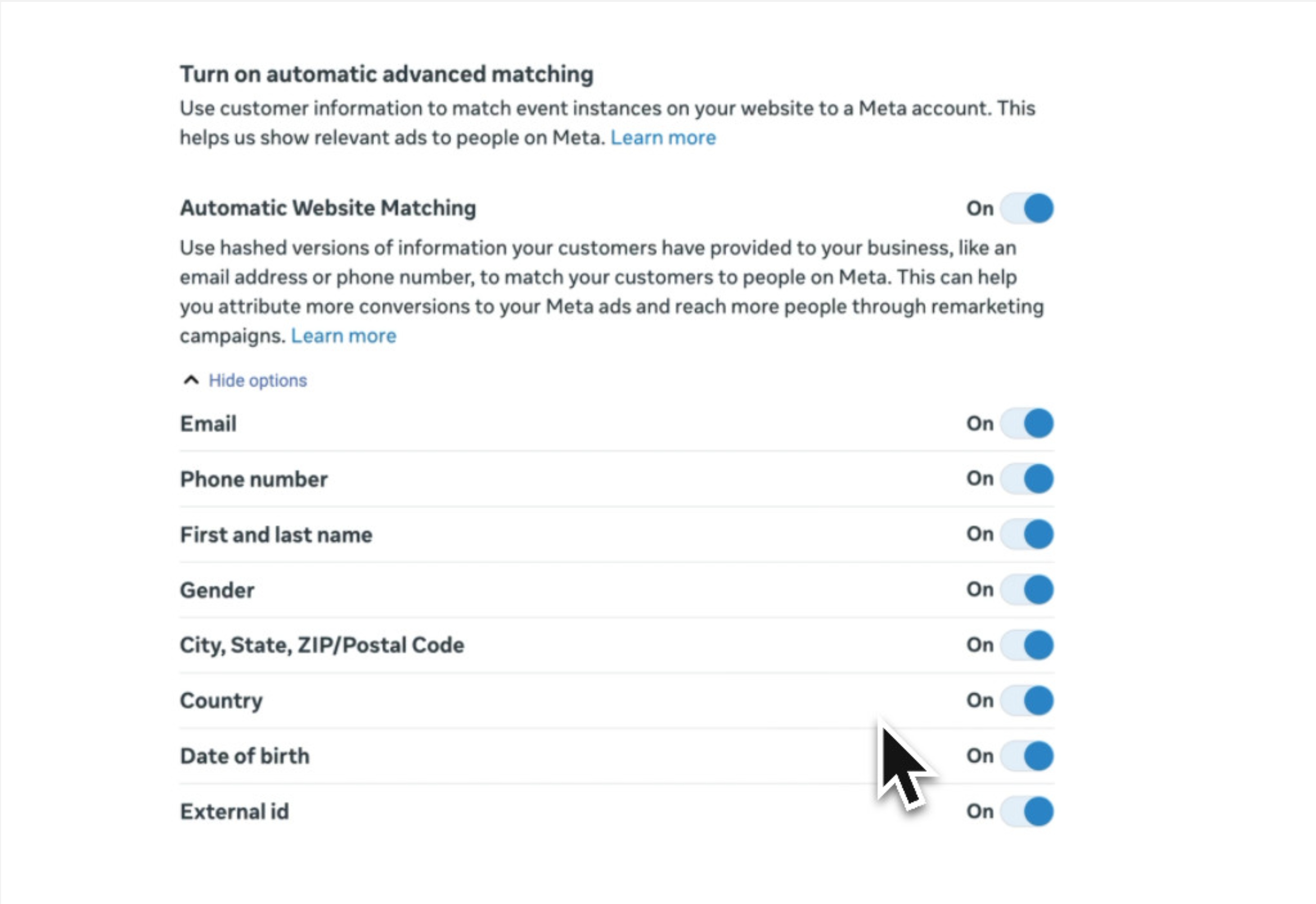Ad spend planning & maximizing contribution margin
Here's a question that might seem obvious at first: Should you set targets based on sales numbers?
Sales figures are one of the most common success metrics businesses use to measure performance, whether month-over-month or year-over-year. But here's the thing—focusing solely on sales can lead to some seriously poor marketing decisions. Let me show you why.
Understanding Contribution Margin: The Three-Step Journey
To understand why sales targets can be misleading, we need to talk about contribution margin and how it changes throughout different phases of the sales process.
📖 [Similar read] - What is Contribution Margin?
Contribution Margin 1 (CM1)
You start with the price of your product and subtract the cost of goods sold (COGS)—essentially your inventory cost. The difference between these two is your Contribution Margin 1.
CM1 = Net Sales - Cost of Goods Sold
Contribution Margin 2 (CM2)
But wait, there's more. You also have logistics costs, returns, fulfillment expenses—all those additional factors that go into actually delivering your product to customers. After subtracting these from CM1, you get Contribution Margin 2.
CM2 = CM1 - Logistics - Returns - Fulfillment Costs
Contribution Margin 3 (CM3)
The final step involves your marketing costs—everything you're spending to promote the product, acquire new customers, and drive sales. Once you subtract these marketing expenses, you're left with Contribution Margin 3.
CM3 = CM2 - Marketing Costs

As you can see, at every step of this journey, you lose more of the dollars you initially earned from the sale. What remains in CM3 is what actually stays in your business.
The Sales vs. Profit Paradox
Here's where things get interesting—and counterintuitive. There's usually an inverse relationship between net sales and CM3. As your sales increase, your CM3 often decreases.
Why does this happen? Efficiency loss.
The first sale you make is always the easiest because it's the lowest-hanging fruit. You're targeting the customer who's most prepared to purchase. But for every dollar you spend after that, you're going after customers who are less likely to buy. You have to pay more to get exposure and work harder to convince them to purchase your product.

A Real Example: The T-Shirt Company
Let me illustrate this with a hypothetical example. Imagine a t-shirt company that sells shirts for $30 each, with a CM2 percentage of 30% (meaning they keep $9 after covering COGS and fulfillment costs).
Let's assume that for every $1,000 increase in ad budget, their cost per order increases by $0.50. Here's what happens:
- At $1,000 ad spend: Lower cost per order, fewer sales, but healthy CM3
- At $4,000 ad spend: Peak CM3—maximum profitability
- At $10,000 ad spend: High sales volume, but CM3 starts declining due to increased acquisition costs
What we see is that CM3 has a parabolic relationship with ad spend. It increases to a peak, then starts declining as you spend more—even though sales continue to grow.

Finding Your Sweet Spot
The key insight? You want to maximize CM3, not sales.
At the $4,000 ad spend level in our example, you're not maximizing net sales, but you are maximizing the money that actually stays in your business. Continue spending beyond this point, and you're essentially paying for the privilege of losing money on each additional sale.
Our Process: Maximize, Then Optimize
When we work with clients at Artifex Digital, our goal is to find that sweet spot—the ad spend level that maximizes CM3 while covering all operating expenses like rent, software, and employee salaries.
But here's the thing: the relationship between cost per order and budget isn't set in stone. You can improve it by:
- Launching new ad creative that shows different product angles
- Partnering with creators or celebrities on Instagram
- Testing new audiences and messaging approaches
- Developing fresh angles that give people new reasons to consider your product
Anything that gets your ads in front of new eyeballs with compelling reasons to buy can bring that cost per order down and allow you to sustain higher ad budgets profitably.
The Bottom Line
Our process starts with finding that peak CM3 point, but then comes the iteration phase: How can we develop new creatives, explore new angles, and reach new audiences in convincing ways?
The goal is to continuously bring that cost per order down, allowing us to scale ad spend to new maximum points while providing sustainable, profitable growth to your business.
Remember: Revenue is vanity, but profit is sanity. Don't let impressive sales numbers fool you into thinking your marketing is working if your CM3 is suffering. Focus on what actually stays in your business, and optimize for long-term profitability over short-term sales spikes.
Want to find your brand's optimal CM3 point? Our team at Artifex Digital specializes in identifying these profit-maximizing sweet spots for DTC brands. Reach out if you'd like to discuss your specific situation.
Check out our other articles.
Get started today.
We only work with a handful of clients per year. If you're interested, book a discovery with our founder to see if this is a good fit.
What we do
Grow & scale your paid media program with a boutique team of eCommerce advertising pros.
Case studies
See what we've done for other brands and how we can help you. Read their stories.





